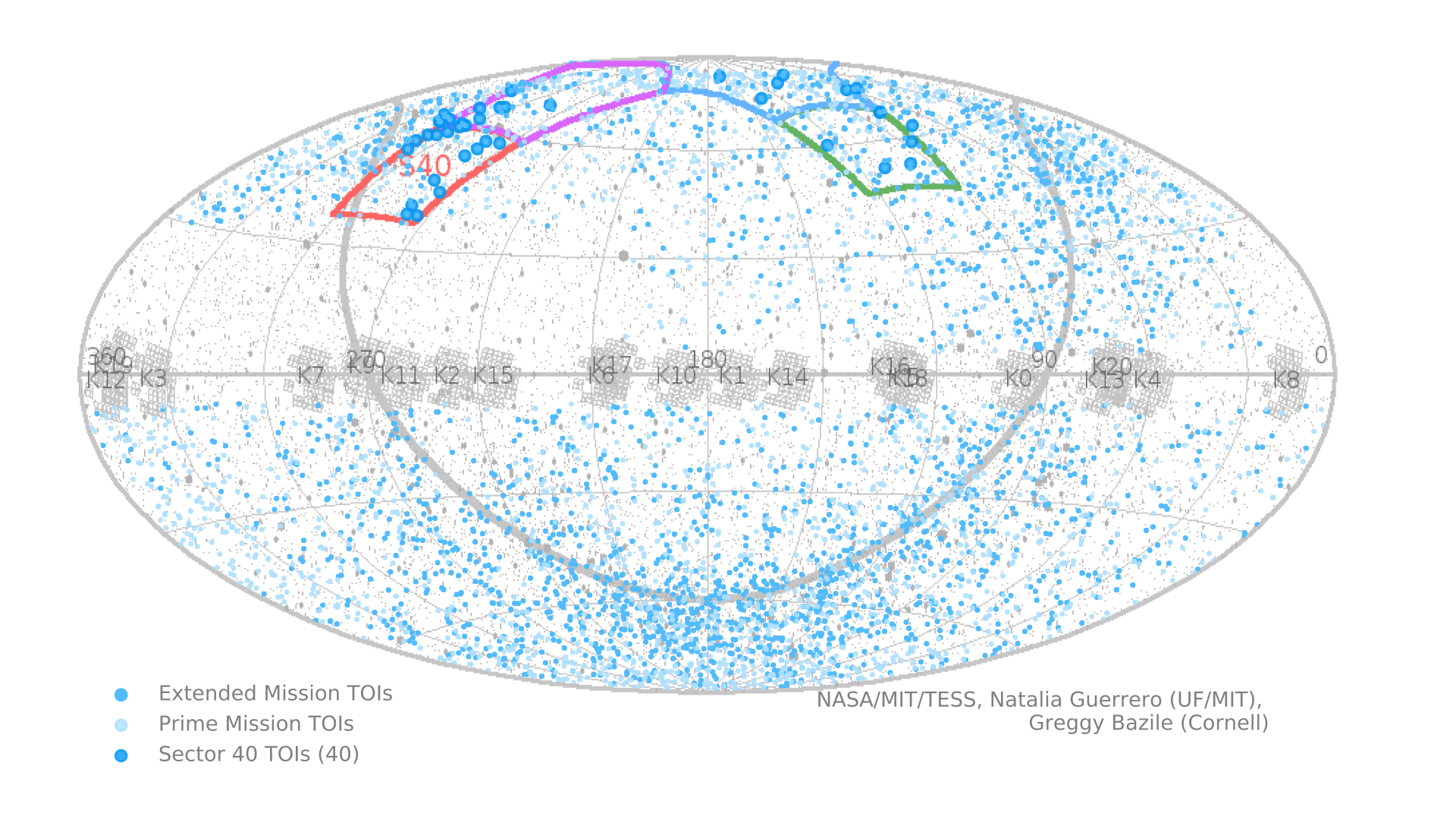Kicking off the fourth year of TESS science operations, the TESS Science Office released forty new TESS Objects of Interest (TOIs) from its fortieth observing sector today. These high-quality exoplanet candidates come from TESS data taken from June 25-July 23, now available on the Mikulski Archive for Space Telescopes, with the TOIs and their follow-up observations available on ExoFOP-TESS.

When an exoplanet in orbit around its host star blocks a small amount of that star’s light from our point of view, it creates a signature “dip” in the amount of light measured from that star over time, its light curve. The TESS Science Office team sifted through thousands of light curves, first with machine learning and automated triage tools, and then by eye to produce these forty possible exoplanets, bringing the total TOI count to 4,511. As soon as tomorrow night, astronomers with a clear view of the Northern Hemisphere sky will start gathering additional observations of each candidate to gather evidence for (or, less favorably, against) its case as a bona-fide exoplanet.
Stars of the Prime Mission: Where are they now?
In late June, TESS began the second half of its extended mission and trained its four wide-field cameras on a strip of sky in the Northern Hemisphere, the first time it had done so in over a year. In addition to observing these forty new TOIs from Sector 40, astronomers interested in TOIs found when TESS previously observed this part of the sky can now add about 27 more days’ worth of data from TESS Sector 40. Additional data points help astronomers refine models of a planet’s light curve and more accurately pinpoint the next time it will transit its host star.
In the first year of the extended mission which began on July 4, 2020, TESS re-observed the Southern Hemisphere sky and nearly doubled the number of TOIs in the catalog from the prime mission final tally of 2,241 planet candidates. The TOI team was able to boost the number of exoplanet candidates with the added data from the extended mission sectors as well as an improved computer-aided search around fainter host stars, which had previously been too large a task to do efficiently.
Over the next several months, TESS will re-observe 24×96-degree strips of the Northern Hemisphere overlapping with the sectors it observed in its Prime Mission. In addition, TESS also turns towards the “equator” of the ecliptic sky map, and observes areas of the sky overlapping with campaigns of the K2 mission. TESS began observing the first of these ecliptic sectors on August 21 (click here for the full TESS observing calendar).
TESS is a NASA Astrophysics Explorer mission led and operated by MIT in Cambridge, Massachusetts, and managed by NASA’s Goddard Space Flight Center. Additional partners include Northrop Grumman, based in Falls Church, Virginia; NASA’s Ames Research Center in California’s Silicon Valley; the Center for Astrophysics | Harvard & Smithsonian in Cambridge, Massachusetts; MIT’s Lincoln Laboratory; and the Space Telescope Science Institute in Baltimore. More than a dozen universities, research institutes, and observatories worldwide are participants in the mission.
Natalia Guerrero
nmg [at] mit.edu